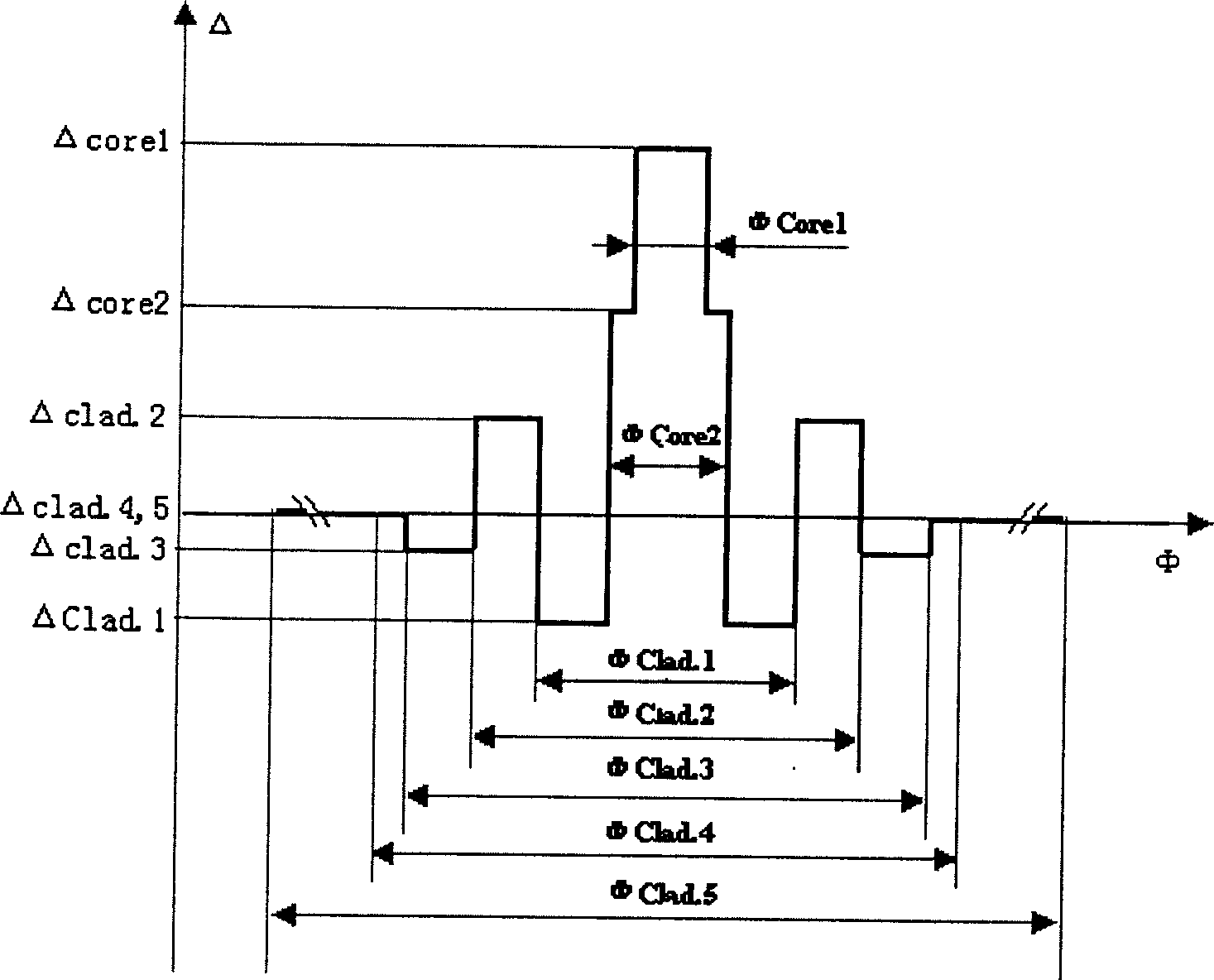Dispersion compensating transmission optical fiber matched with orthochromatic dispersion and ortho chromatic dispersion slope unimodel optical fiber and use
A transmission optical fiber and dispersion compensation technology, applied in the transmission system, electromagnetic wave transmission system, optics, etc., can solve the problems of large proportion, small effective area, unfavorable transmission, etc.
- Summary
- Abstract
- Description
- Claims
- Application Information
AI Technical Summary
Problems solved by technology
Method used
Image
Examples
Embodiment 1-2
[0074] Table 3 lists the figure 1 Table 5 shows the main properties of the obtained optical fiber.
[0075] ΔCore1
Embodiment 3-4
[0077] Table 4 lists the figure 2 Table 5 shows the results of the obtained optical fiber for the second group of refractive index distributions.
[0078] ΔCore1
[0079] The main optical parameters of above-mentioned 4 embodiments are as shown in table 5, and its dispersion characteristic is as follows Figure 7 shown.
[0080] Optical parameters at 1550nm
[0081] For the optical fibers of the above embodiments, by adjusting the doping to ensure that the viscosity is matched, the hydrogen loss of the measured optical fibers is less than 0.01dB / km. By analyzing the composition of the section of the optical fiber, combined with the measurement of the section refractive index and the calculation of formula (1), the viscosity distribution trend on the section of the optical fiber is as follows Figure 9 shown.
PUM
| Property | Measurement | Unit |
|---|---|---|
| Dispersion | aaaaa | aaaaa |
Abstract
Description
Claims
Application Information
 Login to View More
Login to View More - R&D Engineer
- R&D Manager
- IP Professional
- Industry Leading Data Capabilities
- Powerful AI technology
- Patent DNA Extraction
Browse by: Latest US Patents, China's latest patents, Technical Efficacy Thesaurus, Application Domain, Technology Topic, Popular Technical Reports.
© 2024 PatSnap. All rights reserved.Legal|Privacy policy|Modern Slavery Act Transparency Statement|Sitemap|About US| Contact US: help@patsnap.com










